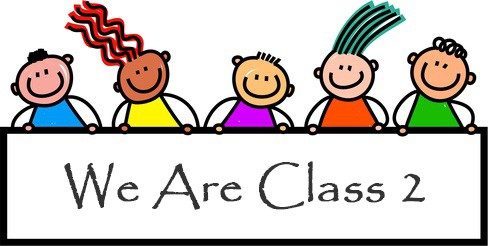Everyone in class 2 should bring home a resource pack today to support with spelling and maths homework and also letter formation. Included in the pack are two 100-squares as we are using these alot in maths at the moment and if I can set additional activities on the blog for you to practise at home that would be really helpful. The number line to 50 will need taping together and then will be an aid for counting on or counting back for addition and subtraction. The set of 0-20 number cards will also be really useful if you cut them up into individual cards. There are all the common exception (tricky word) spelings for all phonics phases and year 1 and year 2 that I posted on the blog last week. Reading these as much as possible (even daily) will really help them stick. Start with the phase 2 and stop when your child can no longer comfortably recognise and read the whole word. Then just occasionally recap the ones they were able to do and focus on the next 5-10 words until they become part of your child’s sight vocabulary for whole word recognition. Every child is now practising daily spellings in school in their own spelling book and they are all being taken from the tricy words sheets. Days of the week can be used for handwriting practice, use of capital letters and will also help them speed up when the need to write the date. The handwriting sheets will help your child to remember the correct starting point for each letter so that they develop memory for writing each letter of the alphabet, lots of the class are writing a high number of letters backwards at the moment which isn’t at all unusual or anything to worry about but we don’t want this to become a habit that is hard to break. Some packs also have sentence ordering sheets to support pupils who are just starting out with writing their own sentences but need extra confidence. As ever, please email me or possibly catch me at the end of the day if you have any queries.
Maths homework practice using the 0-20 cards – possible activities for this half-term.
Firstly check your child can read all of the numbers and keep working on any they are unsure of. Shout out a number and ask them to write the number down so you can check for number reversals. If they have written numbers back to front, ask them if they know what is wrong and if they are unsure, show them the number card to copy. Most children like to use a whiteboard and pen rather than paper and pencil if this is possible.
Another activity we have been practising is recognising place value (tens and units) by partitioning the number. Shufflle the 11-20 cards and ask your child to pick one, for example 17. They then say what the number is made up of – one ten and seven units. They then write this as an addition sentence – 10+7=17. This can be extended right up to 100 by picking single digit cards and putting them together to make a 2-digit number, such as picking 3 and 4 and pushing them together to make 34. (not adding 3 and 4 together to make 7) then saying there are 3 tens and 4 units then writing 30 + 4 = 34.
Another activity to try. Shuffle to 1-9 cards and put face down. Children choose 2 cards to make a 2-digit number representing the tens and the units and then you choose 2 cards to make a 2-digit number as well. Your child has to say who has the biggest number and then try and think of a 2-digit number that comes between the two numbers you have picked. For example: your child picks 5 and 3 and makes 53. You pick 7 and 2 and make 72. Your child recognises that 72 has more tens than 53 and therefore 72 is the biggest number. They then say a number that comes between 53 and 72.
Finally your child could pick out the number cards that add together to make a number bond to ten or a number bond to twenty and then write an addition sentence for this, such as 4+6=10 or 17+3=20 and see if they can spot any patterns.
